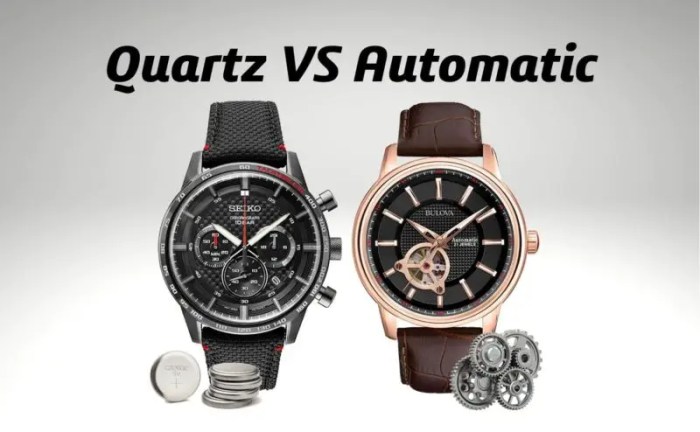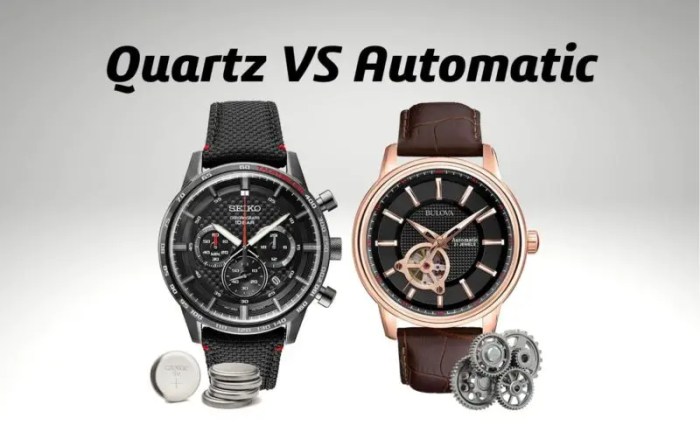Accuracy and Precision: Quartz Or Automatic Watch

Quartz and automatic watches are two popular types of timekeeping devices, each with its own unique strengths and weaknesses. While both aim to keep accurate time, they achieve this in fundamentally different ways, leading to distinct levels of precision.
Accuracy and Precision of Quartz and Automatic Watches, Quartz or automatic watch
Quartz watches are known for their remarkable accuracy, often achieving an accuracy of +/- 15 seconds per month. This precision stems from the use of a quartz crystal that vibrates at a very stable frequency when an electric current is applied. This vibration is then used to regulate the watch’s movement, resulting in consistent timekeeping.
Automatic watches, on the other hand, rely on the mechanical energy generated by the wearer’s movements to power the watch. The accuracy of an automatic watch is affected by several factors, including the quality of its components, the watch’s winding efficiency, and the wearer’s activity levels. As a result, automatic watches typically have a lower accuracy than quartz watches, with an average accuracy of +/- 30 seconds per day.
- Quartz watches:
- Accuracy: +/- 15 seconds per month
- Precision: High, due to the stable frequency of the quartz crystal.
- Real-world example: A quartz watch used for timing athletic events can consistently record precise times, even during intense competition.
- Automatic watches:
- Accuracy: +/- 30 seconds per day
- Precision: Lower than quartz watches, influenced by factors like winding efficiency and wearer’s activity levels.
- Real-world example: A vintage automatic watch might lose or gain a few minutes over a week, depending on the wearer’s activity level.
